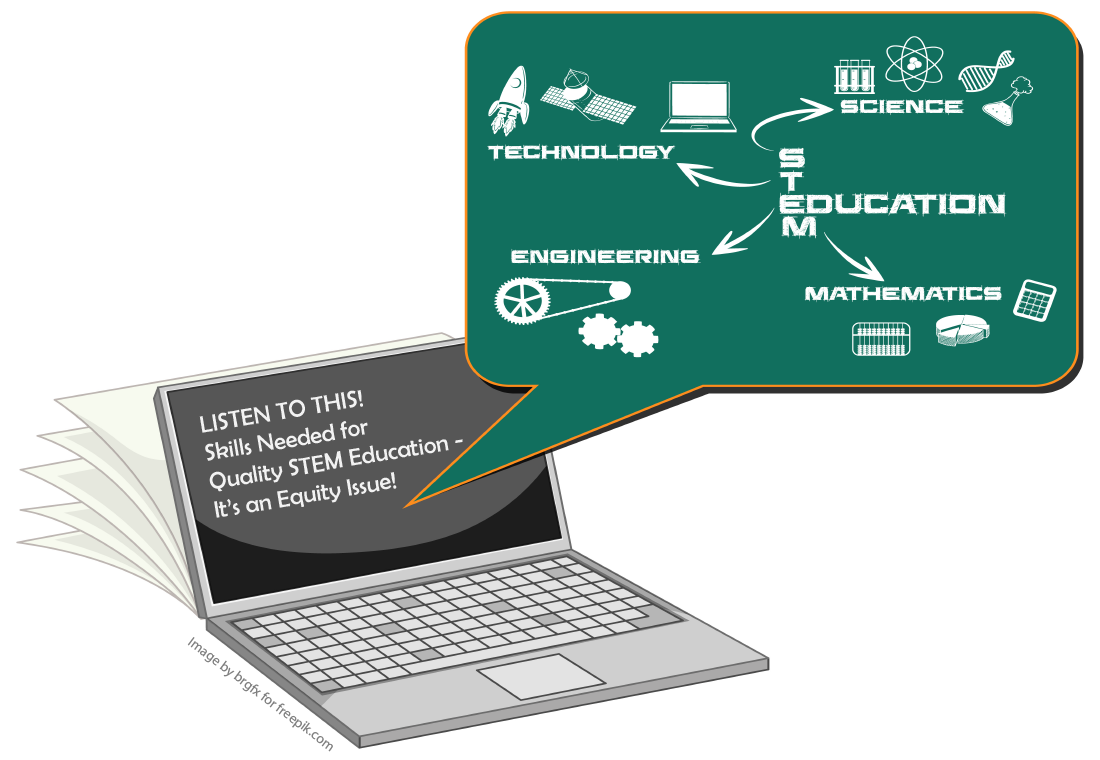
“STEM allows kids to build and create ideas from scratch and have deep critical thinking. We need to prepare our kids for that future.” – Braydon Moreno, co-founder of Robo 3D
There is no longer a question on whether or not STEM education is valuable. Science, technology, engineering, and mathematics education focuses on the critical skills children need such as initiative, technology literacy, communication, social skills, and critical thinking. With a quality STEM, or STEAM when the arts are integrated, education children from all backgrounds and experiences are able to build on the necessary skills for future careers such as leadership, problem solving, creativity, decision making, and entrepreneurship. It is these skills and the potential of STEM education to foster creative and innovative thinkers that flowed through the conversation between Larry Jacobs from Equity and Access (ace-ed.org) and Braydon Moreno, Director of Boxlight STEM Solutions and co-founder of Robo 3D. Much of their discussion focused on the importance of STEM and how it can be incorporated even within a distance or hybrid learning environment.
To listen to this informative conversation, click: Skills Needed for Quality STEM Education - It's an Equity Issue
The conversation started with how critical it is that children prepare for the skills needed in jobs and careers based in STEM-related fields, jobs that are rapidly growing. According to the U.S. Department of Commerce, over the last decade “STEM occupations grew much faster than employment in non-STEM occupations (24.4 percent versus 4.0 percent), and STEM occupations are projected to grow by 8.9 percent from 2014 to 2024, compared to 6.4 percent growth for non-STEM occupations.” (2017)
Says Moreno, “Look at where the trend lines are going. The jobs of tomorrow aren’t in automation. They’re in cyber physical systems. They’re in engineering. They’re in creating. When you look at that, it’s like if we don’t teach STEM in education, the STEM careers that are going to be the major driver of all careers moving forward aren’t going to be fulfilled. You’re going to see a huge skills gap.”
“STEM can be affordable, STEM can be easy-to-implement, you just need to know where to go and what to do.”
In his role as Director of STEM Solutions at Boxlight, Moreno explained the value of a STEM solution that teachers can use right away without worrying about the complications of not having the right hardware. “STEM can be affordable. STEM can be easy-to-implement. You just need to know where to go and what to do,” he explains. With his own STEM entrepreneurship roots (“We started our 3D printer company on a dining room in San Diego”) to being named as one of Forbes 2017’s “30 Under 30 to Watch”, Moreno has invested his creative energies in moving 3D printing and other STEM products into classrooms around the country.
Through his experiences watching STEM learning in action, he describes the powerful results when students are involved in projects from concept to creation.
“(Kids) come up with this idea and we go through the process of designing it through 3D modeling it and making it on a 3D printer and then holding it in their hand…and that experience is pretty magical. When you start to see that you go ‘Wow!’ This is the type of change I want to see in more classrooms around the country. We call it intrinsic accomplishment which is a simple way of… getting a boost of motivation, a boost of self-confidence.”
In addition to Robo 3D printers and MyStemKits standards-driven curriculum, Moreno also advocates for STEM solutions like Labdisc portable STEM labs and Mimio MyBot robots that can be taken home for hands-on learning if schools are in a hybrid or distance learning situation. If providing hardware is a challenge, there is a virtual STEM solution based on the MyStemKits curriculum. About these kits, Moreno says, “We have these virtual STEM lessons where for (a) catapult for example, the teacher can send this virtual STEM module to the kids and they can launch this digital catapult and do different activities with it.” (To read about how the Virtual STEM Kits can be used, read STEM Lesson Idea: Using Virtual Learning to Drive Environmental Change.
Moreno is clearly a proponent of STEM education and a true thought leader when it comes to every child having the opportunity to grow critical STEM-related and 21st century skills. Take some time to listen to this thoroughly engaging conversation about what STEM learning can be now and its influence on the future.
“We’re still pushing the boundaries of bringing STEM to a distance or hybrid learning environment.”
You can find this and other podcasts and videos about how Boxlight has successfully helped schools and classrooms globally to improve student engagement and learning through our many learning solutions. Go to mimio.boxlight.com/educator-stories-videos-podcasts.
For more on the Boxlight MimioSTEM solutions, including Virtual STEM Kits for hybrid and remote learning environments, go to mimio.boxlight.com/stem-education.
*U.S. Department of Commerce. STEM Jobs: 2017 Update. Retrieved 11/17/2020


